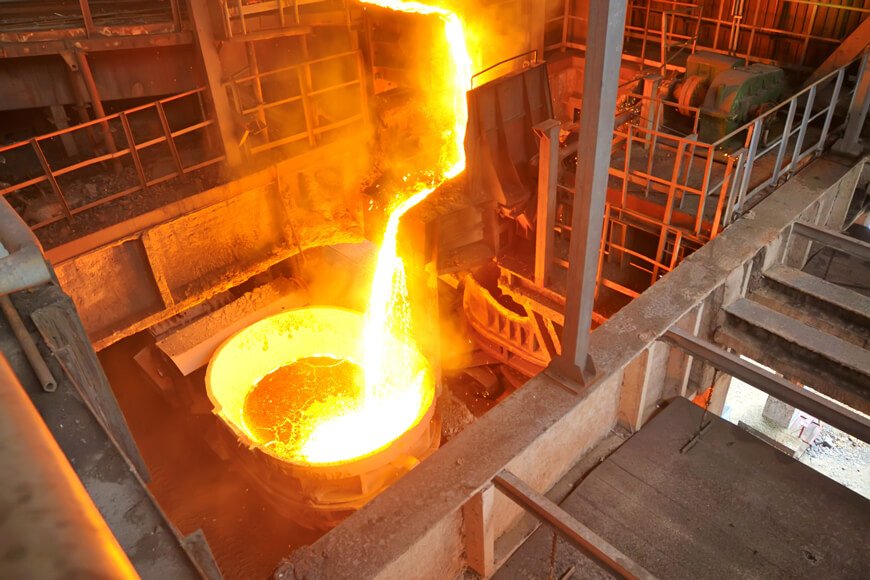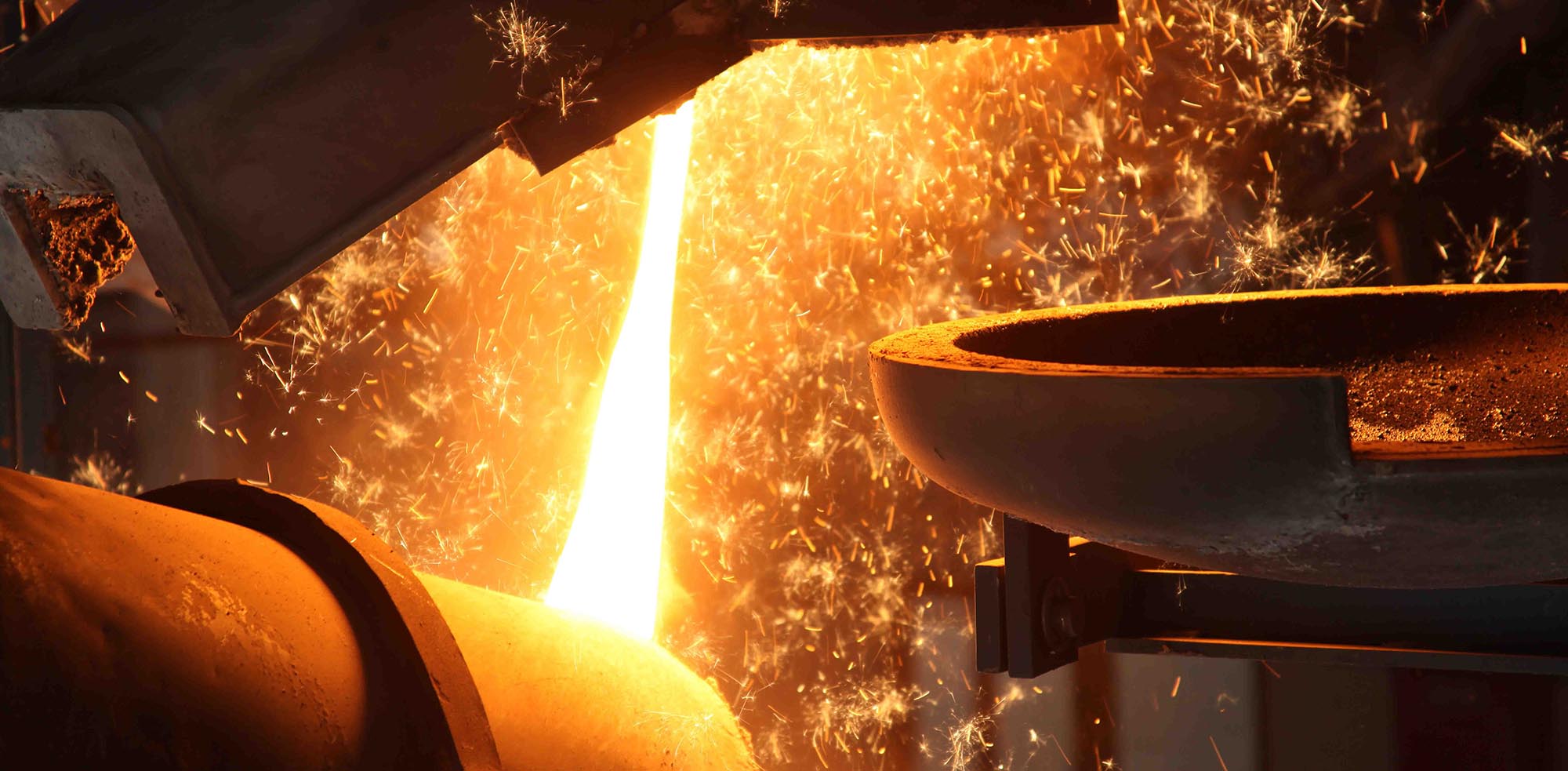Top techniques that define successful Metal Casting results
Revealing the Complexities of Design and Manufacturing at a Metal Foundry
The design and production procedures at a metal foundry include a series of intricate steps. Each phase, from picking basic materials to melting and spreading, plays a crucial function in the end product. Aluminum Foundry. Precision and high quality control are vital in this sector. Yet, as technology developments, brand-new advancements are arising. These developments may redefine standard practices. What implications do these modifications hold for the future of metal shops?
The Melting Process: Transforming Raw Products Into Fluid Metal
The melting procedure offers as the vital initial step in transforming resources into fluid metal, a treatment necessary for foundry procedures. This stage starts with the mindful selection of metals, which may include copper, aluminum, or iron, depending upon the desired last product. Each product is reviewed for purity and structure to ensure ideal melting conditions.

As the metals reach their melting point, they transform from solid to fluid, enabling further refinement. This process can also include the removal of pollutants through slag development, ensuring the high quality of the liquid metal. Inevitably, the effective completion of the melting procedure lays the structure for succeeding metalworking procedures.
Molding Techniques: Shaping Metal With Accuracy
Complying with the melting process, the next phase in steel foundry operations entails molding methods that form the liquid steel right into wanted types. Numerous methods are used, each picked based upon the certain demands of the job. Sand casting, among one of the most usual techniques, makes use of a combination of sand and binder to create molds that can be easily formed and recycled. One more technique, investment casting, entails creating a wax pattern that is covered in a ceramic covering, permitting complex designs and high accuracy.
Die spreading, in contrast, uses high-pressure to inject molten metal into steel mold and mildews, causing long lasting and uniform products. In addition, the selection of molding technique influences the cooling price, surface area finish, and dimensional precision of the last product. Recognizing these methods is important for enhancing style and making certain the successful manufacturing of metal elements customized to particular applications.
Casting Methods: From Model to Production
Many casting approaches are utilized in metal factories to shift from prototype advancement to major production. Amongst these methods, sand spreading stands apart for its flexibility and cost-effectiveness, making it ideal for both big and small production runs. Financial investment casting, recognized for its accuracy, is usually utilized for intricate geometries, permitting fine details in the last product. Pass away spreading, ideal for high-volume production, uses liquified steel injected into molds, offering exceptional surface coating and dimensional accuracy.

Quality Assurance: Making Certain Excellence in Every Pour
While the spreading process can vary substantially in between approaches, maintaining strenuous high quality control is important to determine that every put fulfills the called for requirements. Quality assurance in a metal foundry encompasses a collection of systematic checks and examinations designed to determine issues early in the production procedure. This consists of meticulous evaluations of basic materials, monitoring of melting temperature levels, and evaluations of mold integrity.
Foundry employees employ numerous screening strategies, such as non-destructive screening and dimensional verification, to establish that spreadings achieve desired specifications. Additionally, adherence to established industry standards and qualifications enhances the reliability of the final product.
Feedback loopholes are likewise important; any disparities kept click here to read in mind throughout high quality assessments are analyzed to refine processes and reduce future mistakes. Inevitably, a culture of top quality guarantee cultivates not just customer fulfillment yet also a credibility for quality in the competitive landscape of metal production.
Developments and Technologies: The Future of Metal Foundries
The landscape click to find out more of metal foundries is swiftly developing, driven by advancements in modern technology and ingenious techniques. Automation and robotics are changing traditional process, enhancing effectiveness and precision during manufacturing. Automated pouring systems and robot arms lower human mistake, resulting in higher high quality results. In addition, the assimilation of expert system is enabling predictive upkeep, maximizing tools performance, and lessening downtime.
Additive manufacturing is becoming a game-changer, allowing for quick prototyping and the creation of complex geometries that were formerly unattainable. This technology promotes the customization of steel parts, satisfying certain customer requirements without significant time hold-ups.
Sustainability is additionally a crucial focus, with foundries embracing greener techniques, such as reusing scrap metal and using energy-efficient heaters. These technologies not just enhance efficiency but likewise align with global initiatives in the direction of ecologically responsible production, making certain the future of metal factories continues to be durable and competitive in a transforming commercial landscape.
Frequently Asked Inquiries
What Sorts of Metals Are Commonly Utilized in Foundries?
Common metals used in foundries consist of aluminum, cast iron, steel, bronze, and brass (Aluminum Casting). Each steel has one-of-a-kind properties, making them suitable for numerous applications in sectors like auto, aerospace, and building and construction, among others
Just How Do Factories Handle Waste and Environmental Impact?
Shops take care of waste and ecological influence by executing reusing programs, using sophisticated purification systems, and adhering to strict regulative requirements. They usually invest in lasting technologies to reduce exhausts and promote accountable source use throughout their procedures.
What Safety Steps Are in Place for Employees?
Factories implement different precaution for workers, consisting of personal protective tools, proper air flow systems, regular security training, emergency action protocols, and strict adherence to job-related wellness policies to reduce threats connected with hazardous materials and devices.
How much time Does the Entire Production Process Usually Take?
The entire production procedure typically takes several weeks, depending upon the complexity of the style and the products utilized. Factors such as mold prep work, melting, and cooling time considerably go to this web-site affect the general duration of production.
What Are the Main Tests Dealt With by Metal Shops Today?
Metal factories today face obstacles such as climbing material prices, changing demand, ecological regulations, proficient labor scarcities, and keeping quality assurance. These problems complicate manufacturing performance and productivity in a significantly open market.
The style and manufacturing processes at a metal foundry involve a collection of detailed steps. The melting process offers as the critical first step in transforming raw materials into liquid steel, a treatment important for foundry operations. Following the melting procedure, the following stage in metal foundry operations involves molding techniques that shape the fluid steel right into desired types. Many casting techniques are used in steel shops to shift from model development to major manufacturing. Quality control in a metal foundry incorporates a collection of systematic checks and assessments created to recognize problems early in the manufacturing procedure.